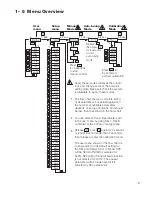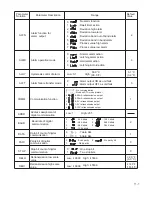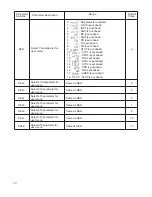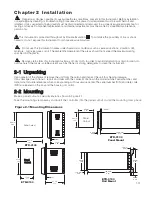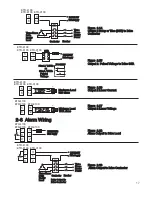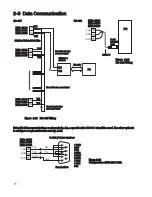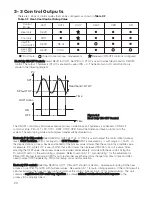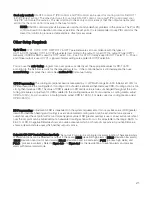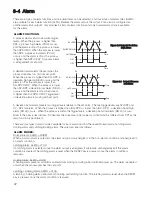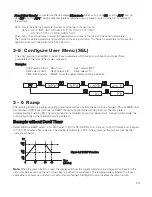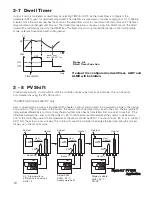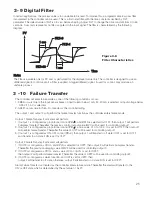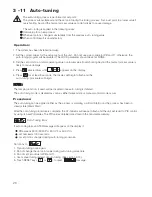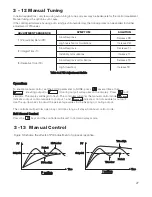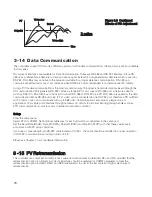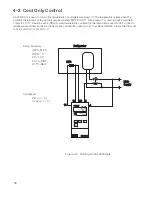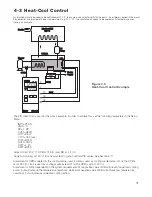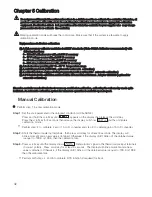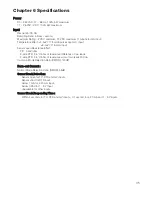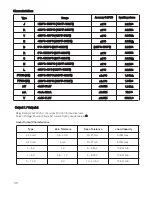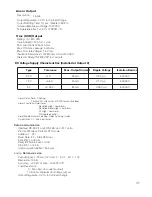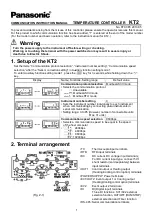
22
SP2+O2HY
SP2
ON
OFF
OUT2 Action
PV
Time
Time
Figure 3.4 Output 2 Process
Low Alarm
Figure 3.4 Output 2 Process
Low Alarm
3-4 Alarm
A process alarm sets two absolute trigger
levels. When the process is higher than
SP2, a process high alarm (PV.HI) occurs,
and the alarm is off as the process is lower
than SP2-O2HY. When the process is lower
than SP2, a process low alarm (PV.LO)
occurs and the alarm is off as the process
is higher than SP2+O2HY. A process alarm
is independent of set point.
A deviation alarm alerts the user when the
process deviates too far from set point.
When the process is higher than SV+SP2, a
deviation high alarm (DE.HI) occurs and the
alarm is off as the process is lower than
SV+SP2-O2HY. When the process is lower
than SV+SP2, a deviation low alarm (DE.LO)
occurs and the alarm is off as the process
is higher than SV+SP2+O2HY. Trigger level
of deviation alarm is moving with set point.
A deviation band alarm presets two trigger levels relative to the set point. The two trigger levels are SV+SP2 and
SV - SP2 for alarm. When the process is higher than (SV+SP2) or lower than (SV - SP2), a deviation band high
alarm (DB.HI) occurs. When the process is within the trigger levels, a deviation band low alarm (DB.LO) occurs.
Normal Alarm: ALMD = NORM
When a normal alarm is selected, the alarm output is de-energized in the non-alarm condition and energized in
an alarm condition.
Note: In the above descriptions; SV denotes the current set point value for control which is different from SP1 as the
ramp function is performed.
There are four types of alarm modes available for each alarm function.These are: Normal alarm, Latching alarm,
Holding alarm and Latching/Holding alarm. They are described as follows:
Latching Alarm: ALMD = LTCH
If a latching alarm is selected, once the alarm output is energized, it will remain unchanged even if the alarm
condition is cleared. The latching alarm is reset when the RESET key is pressed, once the alarm condition is
removed.
Holding Alarm: ALMD = HOLD
A holding alarm prevents or inhibits an alarm from kicking on during initial controller power up. The alarm is enabled
only when the process reaches the set point
Latching / Holding Alarm: ALMD = LT.HO
A latching / holding alarm performs both holding and latching function. The latching alarm is reset when the RESET
key is pressed, once the alarm condition is removed.
There are 6 types of alarm functions and one dwell timer can be selected, and four kinds of alarm modes (ALMD)
are available for each alarm function (ALFN). Besides the alarm output, the output 2 can also be configured as
another alarm. But output 2 only provides 4 kinds of alarm functions and only normal alarm mode is available
for this alarm.
Figure 3.3 Output 2 Deviation
High Alarm
Figure 3.3 Output 2 Deviation
High Alarm
SV+SP2
SV+SP2-O2HY
ON
OFF
OUT2 Action
PV
Time
Time
ALARM FUNCTIONS:
ALARM MODES:

